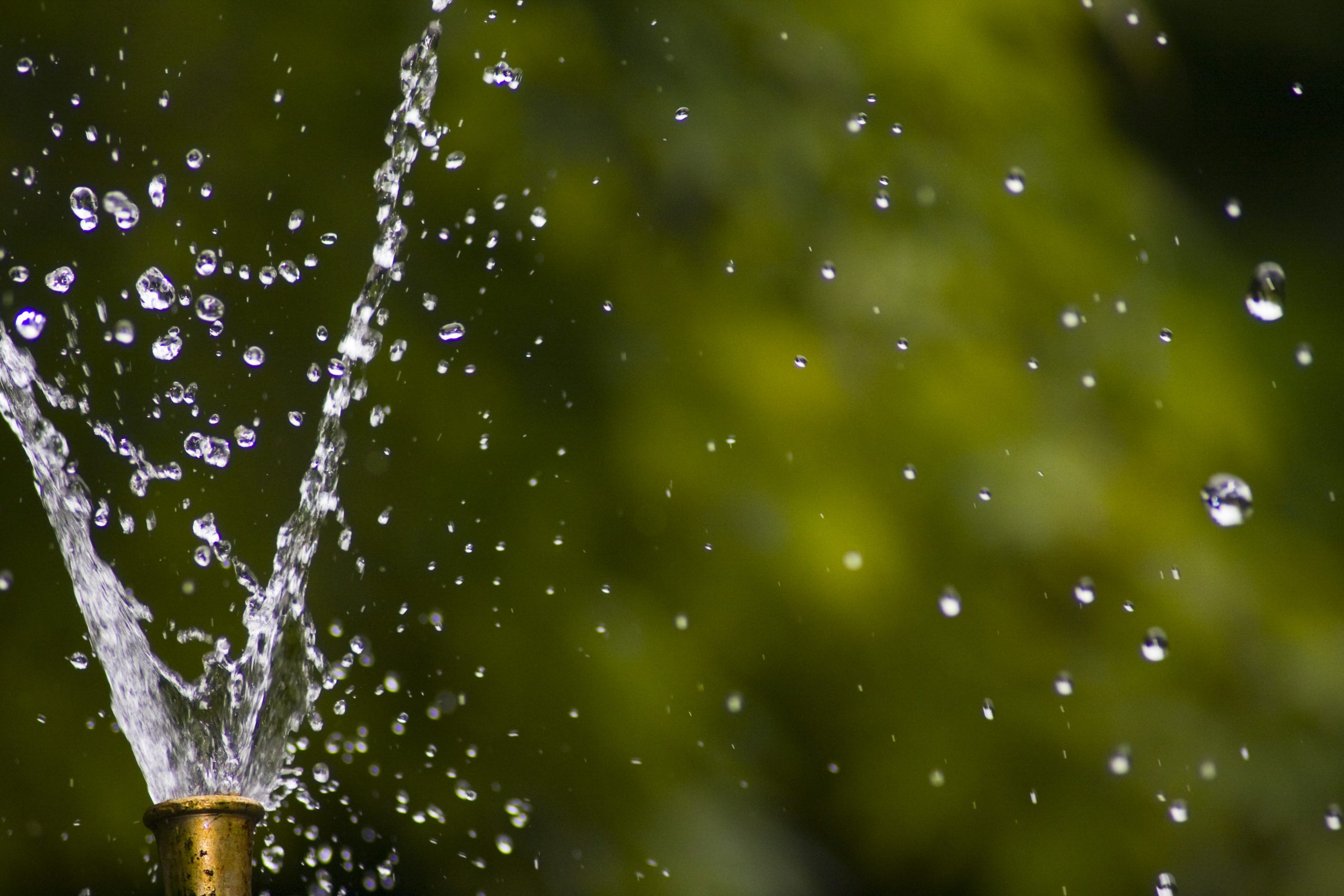Watering the Plants in your Landscape

Homeowners are quick to water the lawn when it begins to turn brown. What many homeowners forget to do is water their plants as well. Trees and shrubs are living things, and like all living things, they need water for survival.
Watering Methods
The big questions are, how much water do your trees and shrubs need, and what is the proper way to water them? There are many variations of ways to watering plants: using a bucket or plant waterer, with a hose, and utilizing an underground sprinkler system are a few methods.
The easiest way to water your plants is by using an underground lawn irrigation system with a timer on it. Set it and forget it, right? The only problem is that your lawn irrigation system function is to water your lawn, not your landscape plants. For example, an automated lawn irrigation system in hot and dry seasons is not going to provide enough water when watering your plants. A specialized irrigation system can be installed for your landscape plants through your irrigation company.
There are also hoses that you can buy at your local garden supply store that you can lay on the ground around the plants, they are normally referred to as soaker hoses. These hoses have tiny holes in them that allows water to seep out of it and into the soil. Additionally, external timers can be purchased at garden centers to turn the water on and off at your discretion. These hoses are handy because once you set them around the plants, all you have to do is to turn on the water. The other option with hoses is to water with a conventional hose without a nozzle attachment. With this type of hose you should place the hose at the base of each plant. With a hose running half of the maximum flow rate, trees can be watered around 30 minutes and shrubs for about five minutes. Depending on the size of your landscape, watering the plants could take quite some time.
Finally, watering with a watering can or bucket is another option. There are pros and cons to this method. Let’s start with the pros. First, you can control the amount of water that is being applied. For instance, you may know how many gallons said bucket is, and you could use that knowledge and to see how much water you are applying. Also, you can better control the rate at which the water is coming out. As for cons, there is one major one, it could be a lot of physical work! The watering can could be heavy and require multiple trips to the spigot for filling.
How much water do you need?
Now that we have watering methods out of the way, how much water is needed for your plants? The general rule is when you water shrubs, soak the soil approximately 12 inches deep. Keep in mind that the roots from the plants can extend out about 3 times the canopy spread. For example, if the canopy spread is about 2 feet, then the root spread would be about 6 feet. These root spreads are vital in taking up water. So, how do you know when you’ve reached the watering depth of 12 inches? A soil probe. This is an apparatus that you insert into the soil and it pulls out a plug. If you can get the probe 12 inches into the soil, you’re fine. As for how often, you should water the plants when the soil probe cannot get past 3-4 inches.
How often should you water your flowers and perennials? They do not need as much water as trees and shrubs because their root zone is closer to the soil. During hot, dry periods, you should water every day to where the soil is moist. These types of plants can dry out quickly if not watered frequently enough. You should also water early in the morning because it would allow the foliage of flowers to dry out. Leaving the foliage wet for too long can allow the plants to be more susceptible to diseases.
Finally, newly transplanted trees and shrubs require more water than established plants. Keep in mind that these plants are planted with a root zone that is much smaller than that of an established plant. So, for new transplants, watering as close to the base of the plants is best to allow the water to seep into the root zone. Water these plants every other day for the first couple months to promote establishment. It can take 2 to 3 years before a newly transplanted tree or shrub becomes firmly established.
Conclusion
Being vigilant with watering your plants allows you to enjoy the beauty of the landscape you are trying to create. If you are in our service area or have any questions, feel free to contact us at 908-281-7888 or visit our website at www.fairwaygreeninc.com.




